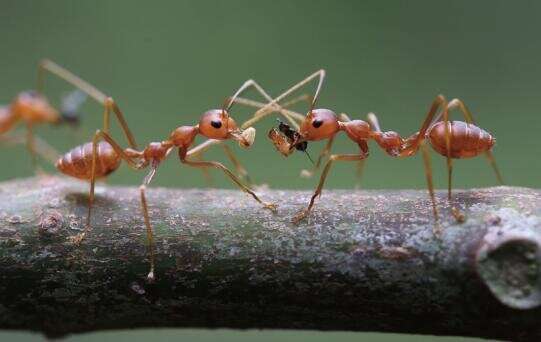Bottom-up process plays central role in determining ant-tree interaction networks

Ants and host plants often form mutualistic relationships. Host plants can provide ants with food directly or indirectly. In return, ants can protect plants from herbivore damage and may participate in pollination and seed dispersal. Ant-plant bipartite networks are well documented at fine spatial gradient scale.
In a study published in Ecological Entomology, researchers from the Xishuangbanna Tropical Botanical Garden (XTBG) of the Chinese Academy of Sciences tried to test whether spatial shifts in the organization and pattern of ecological networks may be driven by species composition turnover, changes in species abundance and/or abiotic effects on species interactions.
The researchers collected arboreal ants and recorded host tree species from five latitudinal sites in Xishuangbanna, China. They constructed bipartite networks and compared spatial variation in species composition, interactions and stability change. They then analyzed the relationship between network structure metrics and network stability.
They found that the ant-tree bipartite network showed sparse connections. At the regional scale, variations in the ant-tree bipartite networks were obvious among the five sampling sites. For each site, the ant-tree bipartite network showed low connectedness, high specificity, low niche overlap and low average links per species.
Furthermore, they found that the geographic distance and elevation were not correlated with differences in ants and trees among the five sites. Network stability, represented by the extinction curves, was positively correlated with species richness and links per species, supporting the diversity determines stability viewpoint. Ant richness was correlated with tree richness at the five sampling sites.
As trees are a fundamental environment for ants and provide food resource, the above results suggest a bottom-up determinant relationship between host plants and ant richness.
"We speculate that this bottom-up process plays a central role in determining ant-tree interaction networks," said Wang Bo of XTBG.
More information: Bo Wang et al, Spatial variation in ant–tree bipartite networks is driven by a bottom‐up process, Ecological Entomology (2022). DOI: 10.1111/een.13189
Journal information: Ecological Entomology
Provided by Chinese Academy of Sciences




















